With anything in life, a common hurdle is often just getting started.
And the same can be true for embroidery!
You'd love to dive in and start learning so that you can embroider onto your clothes, or maybe so that you can make handmade gifts for friends and family.
But, the thing standing in your way is that you just don't know what materials you need to buy.
You've googled embroidery fabric but it's a minefield, and you have no idea what the difference is between the different embroidery hoops, or the different types of needles.
Does this sound familiar?
If it does, well, you're in the right place!
In this blog post we're going to break it all down for you, so there's no more guesswork, and a lot more creating!
Let's take out the overwhelm of getting started, and let's stop abandoning a fun new hobby simply because we don't know where to start!
And the best bit? It doesn't have to cost a lot either 😉
Let's dive in to all things embroidery supplies shall we?!
Hoops
What are they?
Embroidery hoops are one of the 4 essential supplies you need to embroider. Well, you probably know that, the clue is in the name!
They are essential because they are what keeps your fabric nice and taut when you are stitching, and believe it or not, having the right tension in your fabric can make or break the outcome of your embroidery project!
If you’ve never used an embroidery hoop before, and you’re not sure how they work, then I’d recommend giving this blog post a read first:
Related Post: How to load fabric into an embroidery hoop
And you know what? Even if you have embroidered before, I’d still recommend checking it out 😉
One of the biggest mistakes new embroiderers make is not using a hoop correctly, and not having the right fabric tension in their embroidery hoop. So, again, here’s another great blog post you may want to check out!
Related Post: What is ‘drum-tight’ embroidery fabric?
Cool, we know we need an embroidery hoop, but what type of hoop do we need?
The types of hoop
Depending on where in the world you are, embroidery hoops come in various different sizes and materials.
Here in the UK, they are measured in inches, with the most popular size hoop being 4”, 5”, 6”, 7” or 8". In some countries they’re measured in centimetres instead, but they’re generally in the same sizes (i.e. 4", 10cm)
As well as being different sizes, there also various different types of hoop in terms of material. From plastic, to bamboo, the wood, and other materials in between!
The most common hoops you’ll generally see are bamboo hoops, and these are usually a cheaper option. They can be perfect when you’re just starting out, but they can often warp during production, which means they often aren't perfectly circular. Because of this, there can be gaps between the rings, which therefore results in them not holding your fabric very well at tension.
Plastic and wooden hoops tend to do a much better job at holding your fabric securely, but of course do have a slightly higher price tag.
My advice?
Sometimes it’s better to spend a teeny bit more, and have a muchhh more enjoyable experience! After all, embroidery is supposed to be fun, right?!😉
By using a good quality embroidery hoop, you'll save yourself the trouble of having to keep tightening your fabric whilst stitching your project, so believe me when I say, it is worth the extra expense!
My fave supplies
If you’re happy to go for the slightly higher quality hoops that are more fun to use - Elbesee hoops are my personal faves!
Fabric
What is it?
Talking about hoops and loading the fabric into them correctly leads us nicely to talking all about that fabric! I'm sure, by now you’re probably realising that fabric is another essential supply you need for embroidery. So, what fabric do you need?!
Truthfully, there are a huge variety of fabrics that you can use to embroider onto. There isn't a singular ‘embroidery fabric’ that you go and buy from the store.
What to look for:
In order to be suitable for embroidery, you basically need a fabric that is even weave and not very stretchy.
My absolute favourite go-to fabric choices would be:
- 100% cotton
- 100% linen
- A cotton-linen blend
- Cotton calico
Each of these choices have an even weave, and don’t have any stretch to them, which makes them perfect for embroidery. When a fabric is stretchy, it can be really difficult to tighten it into an embroidery hoop without warping and distorting the fabric!

We therefore want to avoid certain fabrics that don’t meet this criteria, and those would be:
- Polyester
- Silk
- Aida
- Other ‘dainty’ fabrics like organza
A quick point to note here - a lot of clothing, particularly t-shirt and sweatshirts, will be a polyester/cotton blend. You can embroider on these, but it’s important not to stretch the fabric too much inside the embroidery hoop.
This post is all about the bases of getting started with modern embroidery, and purchasing fabric specifically for embroidery hoop projects, and not embroidering onto clothing.
(Pssstt.. want to embroider on clothing? We have the perfect kit for that right here!!)
My advice?
Get started with cotton or cotton calico, in a light/natural colour. These are the easiest to work with, especially for beginners just starting out with embroidery!
My fave supplies:
I almost always use cotton calico for every single one of my hooped projects. It’s really cheap compared to cotton/linen, and works really well for embroidery. I use it for 95% of my hoops! You can get hold of calico fabric here.
If you’re happy to go for higher quality and more fun and varied colours, Robert Kaufman Essex cotton/linen blend fabrics are beautiful, and come in a variety of gorgeous colours.
Thread
Now that we've got our perfect embroidery fabric correctly loaded into our hoop, the next thing we're going to need is embroidery thread! Again, it's no surprise that this is part of our essential embroidery supplies to get started!
What is it?
Embroidery thread is specific to embroidery. It's not the same as sewing thread, and it's not the same as machine embroidery thread!
When at the store, you'll always find embroidery thread in an 8m skein just like these photographed below:
Embroidery thread is a type of stranded cotton, and is the thread that will give you the absolute best results in any embroidery projects. I mean it, don't use anything other than embroidery thread when you're getting started!
The types of thread
As with anything, you will always find different brands of embroidery thread. The most common brands you'll see will be DMC or Anchor thread - these are the most reputable threads on the market, and the most widely used by embroiderers.
There are cheaper non-branded alternatives on places like Amazon, but we'll get to those later 😉
DMC is my chosen brand of thread, and definitely the most popular choice. However, even DMC have a bunch of different types of embroidery threads:
- 6 stranded cotton
- Tapestry yarn
- Light effects
- Diamante
- Etoile
- and more!
Whilst it's great to use a variety of these in your projects, as a beginner, you should absolutely just get started with DMC 6 stranded cotton.
This type of thread is your standard 'embroidery thread', and is what most artists refer to in embroidery patterns, and what most embroiderers use.
My fave supplies:
It's probably obvious, but I loveeee DMC. Here's why:
- There are over 500+ gorgeous colours to choose from
- They're colourfast, so are unlikely to run/bleed when wet
- The colours are the same colour worldwide with no variation. 2 skeins will always be the exact same colour
- The threads are silky smooth - so they create gorgeous embroidery!
The downside is that DMC thread can be quite expensive, particularly in the UK.

If you're just getting started and you just want to give it a try, you can get cheap non-branded threads like these on Amazon.
**Though, it has to be said, they're not a patch on DMC, which is to be expected from the price. Trust me, your embroidery experience will be sooo much better if you invest in DMC threads, and slowly build up your collection of colours over time.
Needles
What are they?
Needles are the final 'essential' embroidery supply that you'll need to get started, because it's hard to thread a needle without the needle, duh!
Like thread, there are lots of different types of needles, but there is a specific kind of needle that is perfect for embroidery.
You guessed it, embroidery needles!
Many people get stuck when it comes to needles, knowing which type and size needle to get. So, let's dive into it shall we?
The different types
As I said above, there are several different types of needles. Whilst embroidery needles are the obvious choice, there are a couple of other types of needles that you may use, too. These are mainly:
- Embroidery needles
- Chenille needles
- Tapestry needles
Without going toooo heavy into the differences between them at this stage, here's the main things to note:
- Embroidery needles are the thinnest in diameter, and generally have the smaller eye compared to the other two types of needle.
- Chenille needles are slightly sharper than embroidery needles, but they're thicker and bigger than embroidery needles
- Tapestry needles are much larger, shorter and blunter. They're designed for thicker threads like tapestry yarn, are blunter, and have a much bigger eye.
Each of these needles has a place in embroidery, but when you're just starting out, I'd absolutely advise just sticking to embroidery needles.

What brand of needles do I need?
Like with all embroidery supplies, you can buy branded needles, and also cheaper non-branded needles.
As any beginner, I started out using some cheap needles I found online, not knowing whether they were embroidery needles, let alone what size they were.
As soon as I started using the correct size, branded embroidery needles, my experience and enjoyment improved rapidly!
There are a few brands that I would advise looking into:
- John James
- Clover
- DMC
You can't go wrong with any of these brands, and to make it even easier, they're not expensive so won't break the bank to use high quality supplies!
We stock John James needles in our embroidery kits, but I also love to use the Clover Gold Eye needles.
The last thing I want to do here is overload you with bucket loads of information about needles, but if you want to find out more about selecting the right needle to use, check out this blog post:
Related Post: What Size Needle To Use for Hand Embroidery
My advice?
Needles aren't expensive, a pack of 16 needles costs around £2. Use a high quality needle that's also cost effective, and save yourself the headaches that come with using cheap, incorrectly sized needles!
My fave supplies:
As I said, I love John James size 3/9 needles, or Clover Gold Eye size 3/9 needles. If you struggle with threading a needle, then I'd recommend the Gold Eye needles, as they're much more forgiving!
Wowsers, that was jam-packed with a lot of info, right?!
But, going back to basics, all you need to get started is:
- Embroidery hoop
- Embroidery fabric
- Embroidery thread
- Embroidery needles
Looking for an embroidery kit that has all of these supplies already included, plus a beginner friendly pattern to get started?
Click here to shop our Beginner Embroidery Kits! Particularly this one and this one!
Or maybe you don't need a pattern, and just want a top-up of all my favourite and recommended embroidery supplies? In that case, our Embroidery Supplies Kits are perfect for you!
Don't let the supplies be a barrier to getting started with your new creative outlet, my friend.
One of the best things about embroidery is that it's so inexpensive to get started, and super accessible for anybody to start
Not to mention, it has so many benefits for your mind, your health and happiness.
If you need a little help to get started, reach out to us on our Contact form. We'd be happy to help!
Do you want even more tips about All Things Embroidery?
Join my online membership for stitchers where I share my best embroidery tips + tutorials every week with members.
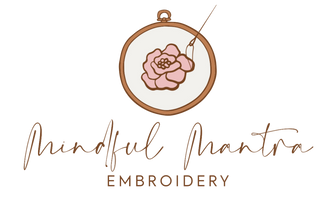
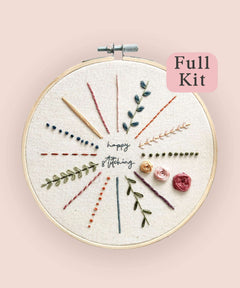
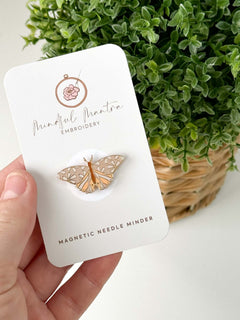
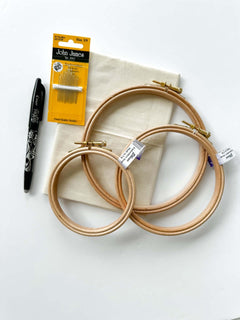





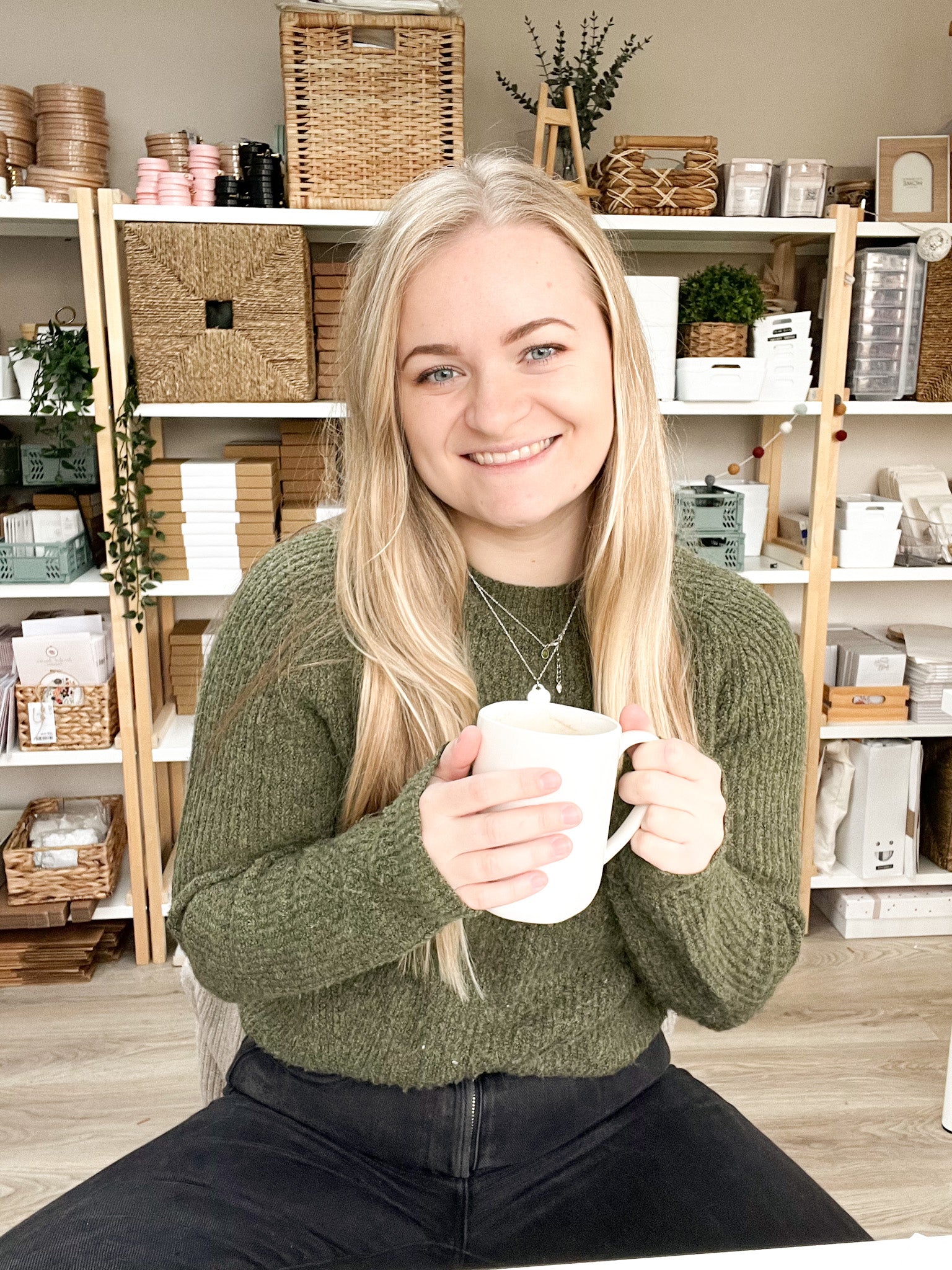

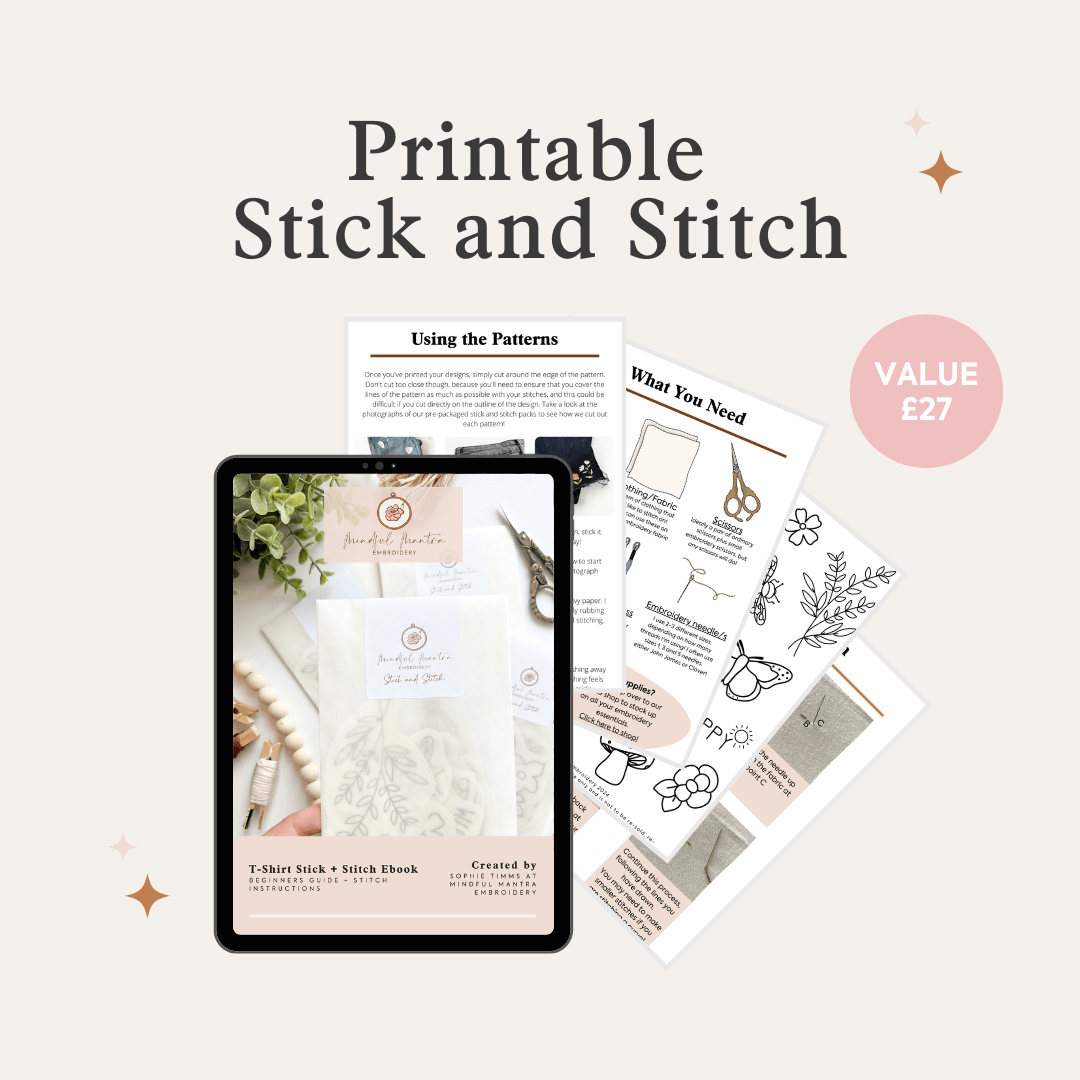
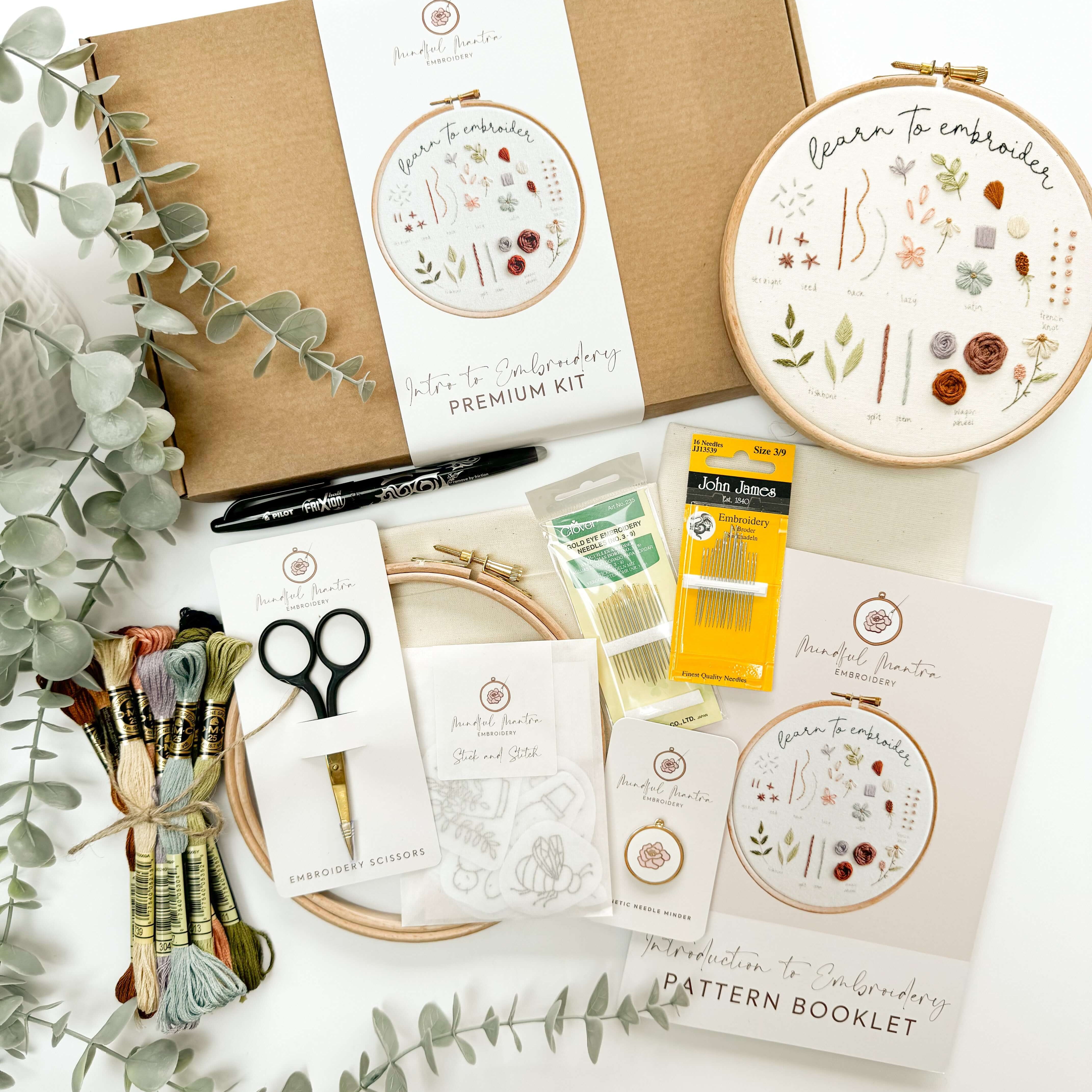

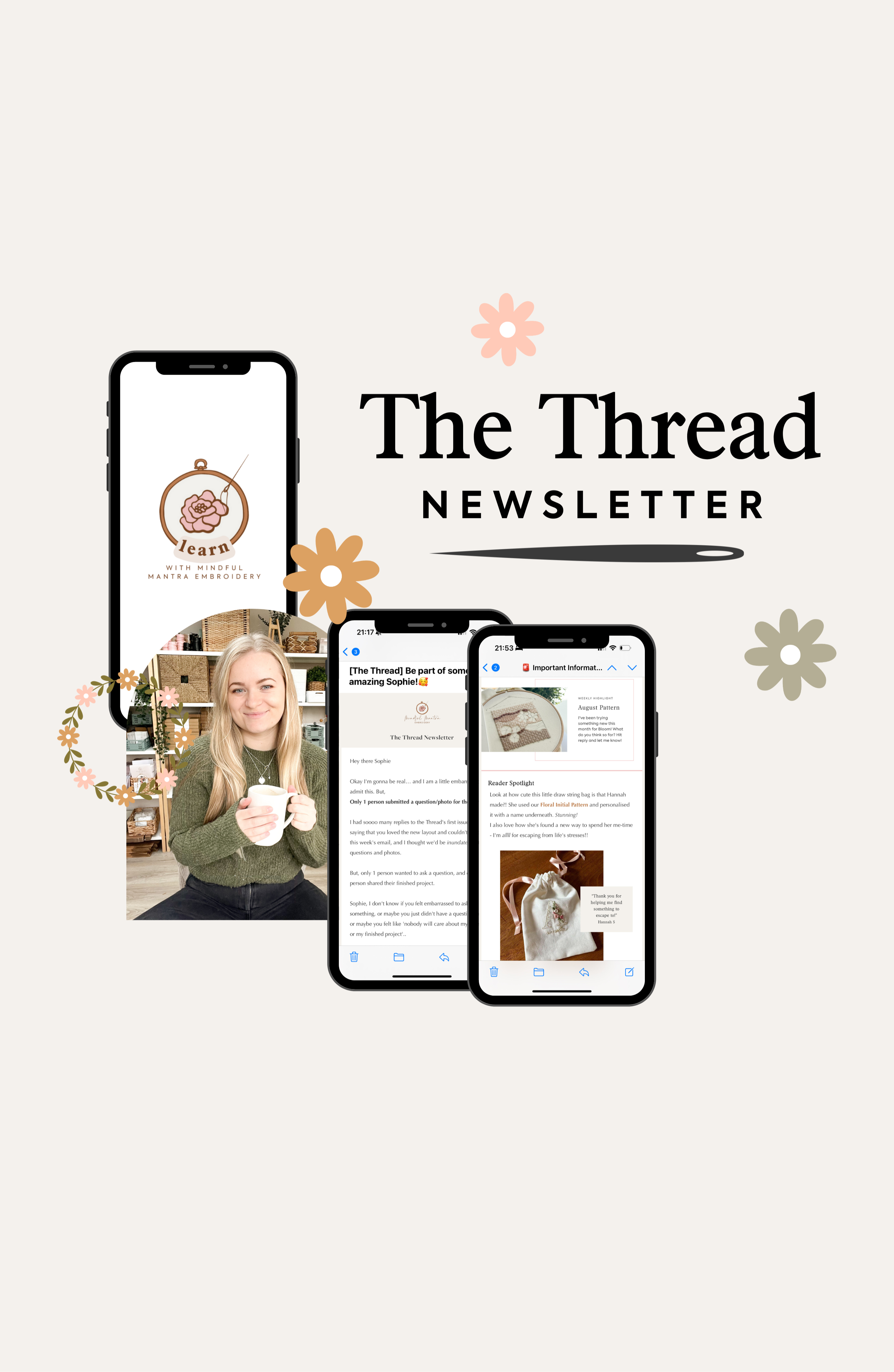
Leave a comment